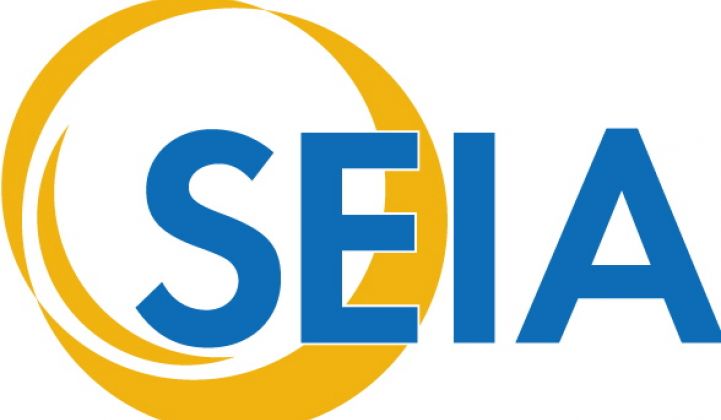The Solar Energy Industries Association (SEIA) hosted a press teleconference today to discuss an emerging trend in the utility-scale solar market toward diversifying solar technologies in utility-scale power plants. But the call strayed from the diversification topic and addressed some of the major issues confronting the U.S. market in 2011.
Jobs, Jobs, Jobs
Rhone Resch, President of SEIA, said that the solar industry employs 100,000 Americans and that that number could double in the next two years. Within a few years, the U.S. will be the world's largest solar market, according to SEIA.
1603 Tax Grant Program and Solar
Resch said that the 1603 tax grant program has filled the void in the collapse of the tax equity market and that the grant program has doubled the efficiency of the Investment Tax Credit (ITC). He remarked that it is scheduled to expire despite the tax equity market not having fully recovered. (The 1603 program provides a 30 percent grant in lieu of the tax credit.)
Resch said, "We have found it to be absolutely critical in the last two years." Resch added that SEIA wants the1603 program extended through 2016 "so we have business certainty. We've found that the 1603 program is an extremely efficient policy for job creation." In the last two years, the solar industry has created 50,000 jobs, according to Resch, adding that the U.S. market will double from 1 gigawatt in 2010 to 2 gigawatts in 2011 and could possibly double again if the tax credit is extended.
This is the kind of policy that yields huge results, creates jobs and doesn't have an enormous impact on taxpayers, according to Resch.
Extension of 1603 is the number-one priority of SEIA and they are working with Republicans and Democrats on the issue. SEIA thinks it has a good chance of extending the program -- and instead of extending it for one year, the group would prefer to see "it ingrained in the tax code through 2016." The 2012 Obama budget does have an extension of the TGP for one more year, according to Resch.
Resch added that 1603 is "simply the most important policy for continuing renewable energy growth in the U.S." The 1603 grant provision was actually passed during the Bush Administration.
It's not just large-scale solar that will feel the pain if 1603 expires. Tax equity and grants are what keeps solar residential financing companies like SolarCity, SunRun and Sungevity in business.
According to law firm K&L Gates, "The 1603 Treasury Grant Program is dead after 2011. There won't be an extension." That information was reported by Ed Gunther while attending a GABA event.
Pushback From the Environmental Community on the Solar "Land-Grab"
Large-scale solar farms on public lands have pitted environmentalists against solar developers, with a bit of help from media amplification. And tortoises.
Resch notes that the oil and gas industry has received 74,000 permits for drilling on public lands over the last century, while the solar industry has received nine permits to build on public lands. "There is no land grab," said Resch, adding, "The EIR [environmental impact report] to study these areas has been comprehensive."
Resch also notes that 75 percent of the U.S. public support locating solar on public land instead of using it for grazing or other uses.
Technological Diversification, etc.
Arizona wants to be a leader in solar. (In 2010, Arizona was the fourth largest state market for solar with 55 megawatts of solar installed.) But that is certainly set to change.
Pat Dinkel, VP of Resource Planning, Arizona Public Service spoke of the Solana solar trough plant -- an Abengoa project with a U.S. DOE loan guarantee, the $500 million, 100 megawatt Arizona Sun project and the plan for Gila Bend to be the solar capital of the world.
In addition to those large projects, APS is working on a number of projects in the 15-megawatt to 20-megawatt range using c-Si panels on trackers or CdTe on fixed mounts.
Tom Georgis, Senior VP of SolarReserve, spoke of the Crescent Dune project (which is backed with a loan guarantee) and the Rice project (which is currently going through the loan guarantee process). Georgis restated the need for clarity and certainty around policy in order to attract project and corporate capital.
Jim Stein, VP of Government Affairs, Schott North America, does qualify as a diverse supplier, as the company manufactures PV panels as well as CSP tubes. The firm has nine manufacturing sites in the U.S. and a flagship Albuquerque solar facility employing over 300 people and looking to expand to a workforce of 1,500 in the near future.



